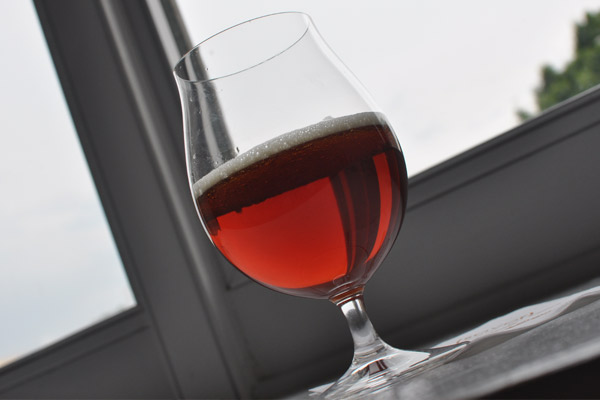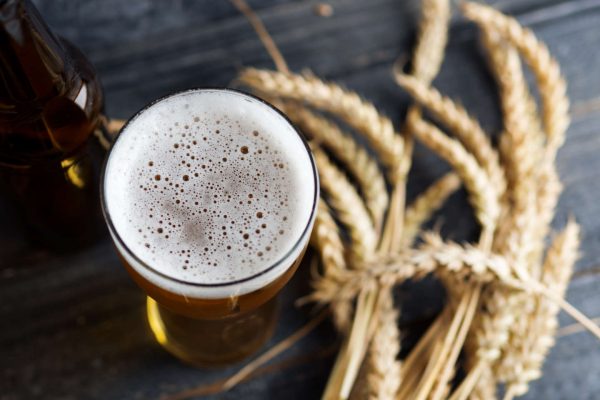
“Bock” is a term reserved to signify beers that are typically over 6% ABV. Generally, the term is specifically used to discuss a family a malt-forward Bavarian lagers varying in strength, color and character.
Category 9 of the 2008 BJCP Style Guidelines is specifically for bock. We took a look at the four substyles of category 9, as well as the honorary wheat-based bock.
Be sure to browse our homebrew recipe section for a collection of bock recipes!
Maibock/Helles Bock
Maibock is a strong, malty lager named for the month of May in which the style is often enjoyed. It’s typically brewed with a large percentage of pilsner malt and possibly some Munich and Vienna, providing raw bread dough character with some rich graininess. The absence of darker malts, like caramel, means the residual sweetness is more reminiscent of the base malt and gives it a lighter color, hence the alternative name helles bock (“pale bock”). The malt is balanced with apparent but restrained hop bitterness, while the alcohol is warming but not unpleasantly solventy.
Traditional Bock
Traditional bock is similar to maibock except it tends to be slightly darker and sweeter from the inclusion of melanoidin-rich malts and slightly less bitter. Much of the richly complex malt character comes from a large portion of Munich along with the darker roasted specialty malts which lend some caramel sweetness to the toasted bread character. Despite the use of these sweeter malts and lower bitterness, traditional bock does not have a cloying finish. Alcohol character is fairly reserved.
Dopplebock
Dopplebock literally means “double bock,” which is fitting since it is essentially a traditional bock in the sense that the bitterness and color thresholds are the same, while the alcohol strength is significantly higher and the body a bit bigger. The result is an extremely malty and strong lager with lots of bread character and more malt sweetness. That being said, dopplebock is a fairly clean drinker, with very subdued alcohol quality and residual sweetness. While the style may seem to have substantial residual sweetness, it is likely more from the combination of low bitterness with assertive malt character. In some cases, dopplebock can include darker specialty grains that add chocolate and roasty qualities.
Eisbock
Eisbock takes the strength of bock lagers to the next level. The name eisbock translates into “ice bock,” which references the process used to create a high gravity yet well balanced lager. In short, a fermented dopplebock is placed in an environment with freezing temperatures. The water content of the dopplebock freezes while the alcohol and sugars remain in liquid form. The ice is seperated from the liquid leaving a concentrated version of the dopplebock.The result is a strong, darker bock with lots of toasty bread and caramel flavors like a dopplebock, but with some hints of dark fruit from the concentration process. Some commercial brewers have made Eisbocks over 40% ABV!
Weizenbock
While it’s not technically under the BCJP bock category, weizenbock has the body and strength of its lagered brethren. Weizenbock is best described as “bigger” dunkelweizen. The style has lots of rich malt character, while the weizen yeast adds some interesting fruit and spice qualities to the wheat-based ale. Unlike the other bocks which are cold fermented and lagered, weizenbock is an ale that relies on warmer fermentation temperatures to achieve the signature spicy-phenolic flavors and aromas.
Bocks At a Glance
| Style | Original Gravity | Final Gravity | Bitterness (IBU) | Color (SRM) | Strength (ABV) |
| Maibock/Helles Bock | 1.064 – 1.072 | 1.011 – 1.018 | 23 – 25 | 6 – 11 | 6.3 – 7% |
| Traditonal Bock | 1.064 – 1.072 | 1.013 – 1.019 | 20 – 27 | 14 – 22 | 6.3 – 7% |
| Dopplebock | 1.072 – 1.112 | 1.016 – 1.024 | 16 – 26 | 6 – 25 | 7 – 10% |
| Eisbock | 1.078 – 1.120 | 1.020 – 1.035 | 25 – 35 | 18 – 30 | 9 – 14% |
| Weizenbock | 1.064 – 1.090 | 1.015 – 1.022 | 15 – 30 | 12 – 25 | 6.5 – 8% |
Sources: Brewing Classic Styles by Jamil Zainasheff and John Palmer; The Oxford Companion to Beer by Garrett Oliver et al.



Share Post